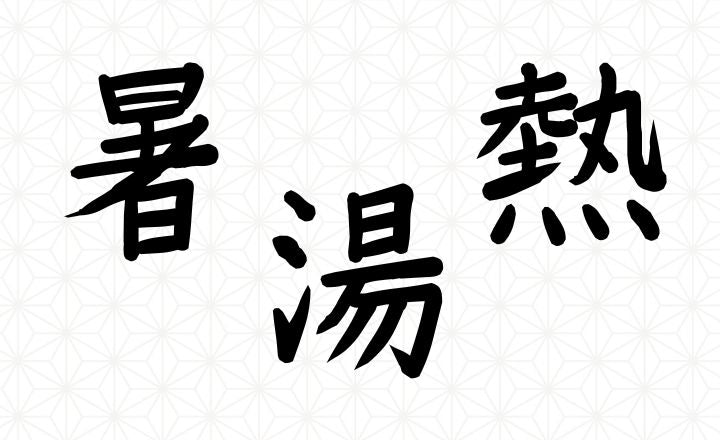
Kanji for 'Hot' in Japanese: 暑, 湯, and 熱 - A Comprehensive Guide
Share
Welcome to our journey into the world of Japanese kanji!
Today, we're going to delve into an exciting and essential concept - 'hot'. Now, you might be wondering, "Isn't there just one way to say 'hot' in Japanese?" The answer is no. In fact, the Japanese language has different kanji for different types of 'hot', and in this article, we're exploring each of them: 暑, 湯, and 熱.
Understanding these kanji is more than just about expanding your vocabulary. It's a window into the beautiful complexity of the Japanese language and culture.
So, whether you're preparing for a summer trip to Japan, wanting to understand the differences between a hot day and hot water, or simply aiming to enhance your Japanese language skills, this guide is for you.
Let's dive in and turn up the heat on your Japanese language-learning journey!
Understanding the origin of 暑, 湯, and 熱
1. Origin of 暑 (Hot weather)
This kanji consists of two radicals:
- 日 (Sun, day): This radical is typically associated with the sun, day, or time in general.
- 者 (Person, someone): This radical usually refers to a person or someone. However, in this kanji, it is used in a more abstract manner to represent the action of enduring or suffering.
So, the kanji 暑 can be thought of as 'enduring the sun', a fitting image for describing 'hot weather'.
2. Origin of 湯 (Hot water)
The kanji 湯 is composed of two elements:
- 氵: This is a variant of the radical 水, which means "water". It is often seen in kanji related to water or liquids.
- 昜: This element is derived from the kanji 陽, which means "yang" in the Yin and Yang concept, often associated with the sun or brightness.
The 昜 element in 湯 could be seen to symbolize the warming or heating up of the water, making 湯 a symbol for 'hot water'.
3. Origin of 熱 (Heat)
This kanji is formed from two components:
- 灬 (Fire): The lower part of this kanji is a variant of the radical 火, which means fire. It signifies heat or burning and is often found in kanji related to fire or heat.
- The upper part of the kanji is a phonetic element derived from the character 耎 (nuan), which means "warm". It doesn't represent a distinct radical but provides a phonetic cue to the kanji. Together, these components create a vivid image of fire causing warmth.
This combination of elements is why 熱 is used to describe 'heat' in a broad sense, from the heat we feel from the sun to the warmth of a heated room.
Next, let's see how to read those kanji and common vocabulary words using them.
But before that, are you learning Japanese but struggling remembering your kanji? Here at Hirakan, we make everyday life products that help you remember your Japanese. Check out our JLPT N5 kanji:
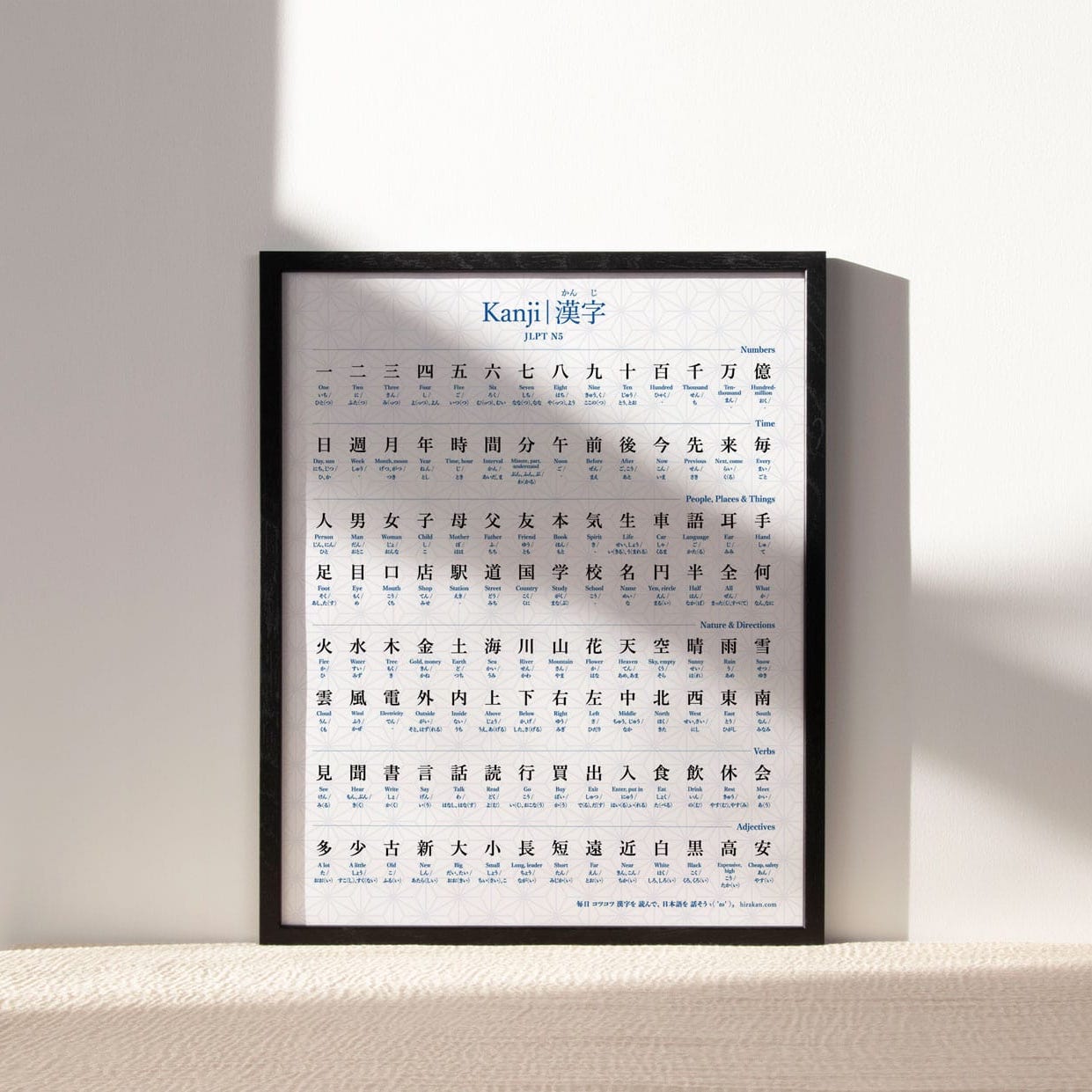
It contains all kanji necessary to pass the JLPT N5. And it makes a pretty stylish wall decor if you ask us. Take a look at the JLPTN N5 poster here!
How to read 暑, 湯, and 熱
1. 暑 (hot weather)
暑 onyomi and kunyomi readings
| Kanji | Onyomi | Kunyomi |
| 暑 | ショ - sho | あつ(い) - atsu(i) |
Vocabulary words containing 暑:
- 暑い (あつい - atsui) = hot (weather)
- 蒸し暑い (むしあつい - mushiatsui) = humid (hot and humid weather)
- 暑さ (あつさ - atsusa) = heat (of the weather)
- 酷暑 (こくしょ - kokusho) = intense heat
- 猛暑 (もうしょ - mousho) = heat wave
2. 湯 (hot water)
湯 onyomi and kunyomi readings
| Kanji | Onyomi | Kunyomi |
| 湯 | トウ - tou | ゆ - yu |
Vocabulary words containing 湯:
- 湯 (ゆ - yu) = hot water
- 温湯 (おんとう - ontō) = warm water
- 湯船 (ゆぶね - yubune) = bathtub
- 湯気 (ゆげ - yuge) = steam
- お湯 (おゆ - oyu) = hot water
- 風呂湯 (ふろゆ - furoyu) = bathwater
- 湯巡り (ゆめぐり - yumeguri) = tour of hot springs
- 湯のみ (ゆのみ - yunomi) = teacup
3. 熱 (heat)
湯 onyomi and kunyomi readings
| Kanji | Onyomi | Kunyomi |
| 熱 | ネツ - netsu | あつ(い) - atsu(i) |
Vocabulary words containing 熱:
- 熱 (ねつ - netsu) = heat, fever
- 熱い (あつい - atsui) = hot (to touch, or passion)
- 熱心 (ねっしん - nesshin) = enthusiasm (literally, "hot heart")
- 熱量 (ねつりょう - netsuryō) = calorie (literally, "heat quantity")
- 熱烈 (ねつれつ - netsuretsu) = fervent, passionate
- 熱中 (ねっちゅう - necchū) = being absorbed in, engrossed in
- 発熱 (はつねつ - hatsunetsu) = generation of heat, fever
How to use 暑, 湯, and 熱 in Japan
1. Cultural significance and usage of 暑 (Hot weather)
The kanji 暑 is heavily used during the summertime in Japan. It's seen in public service announcements and weather forecasts reminding people to stay hydrated and avoid heatstroke.
As for cultural significance, 暑中見舞い (Shochū mimai) is a tradition of sending postcards in summer to inquire about one another's health in the intense heat.
2. Cultural significance and usage of 湯 (Hot water)
The kanji 湯 is significant in Japan due to the country's love for hot baths, or 風呂 (furo). The Japanese bathing culture revolves around soaking in large bathtubs filled with hot water (お湯 - Oyu). This tradition extends to public bathing facilities called 温泉 (Onsen), which are hot springs.
When you see 湯 in signs, it usually indicates a place where hot water is available, such as bathhouses or hot springs. The phrase 湯を沸かす (yu o wakasu), literally meaning 'to boil water', is used when preparing a bath.
3. Cultural significance and usage of 熱 (Heat)
The kanji 熱 is often seen in the context of personal feelings, especially passion or enthusiasm. It is used in words like 熱心 (Nesshin) which means enthusiasm, showing how the Japanese often associate 'heat' with passionate feelings.
Another common usage is in the context of health. Body temperature is referred to as 体温 (Taion), where 熱 could indicate a fever. Also, the phrase 熱が出る (netsu ga deru), meaning 'heat comes out', is a common way to say 'to have a fever'.
Wrap-up
In our exploration today, we've delved into the world of three powerful kanji: 暑 (Hot weather), 湯 (Hot water), and 熱 (Heat). Each of these characters tells a unique story, from their individual radicals that hint at their meanings, to their varied readings and vocabulary that they form.
- Understanding 暑 can help you navigate conversations and readings about the weather, especially in the context of Japan's hot summer season.
- Learning 湯 offers you a glimpse into the beloved Japanese tradition of hot baths and the language around it.
- And 熱, with its diverse applications in expressing intensity, passion, and even health conditions, is a tool to express a range of emotions and situations in your conversations.
We encourage you to practice these kanji regularly, be it in writing, reading, or incorporating them into your daily language study. Learning kanji is more than just memorizing shapes and strokes. It's about understanding the culture and context that these characters inhabit. And as we've seen today, each kanji comes with its own colorful story.
See as well:
- Kanji for 'Fire' in Japanese: 火 or 炎?
- Kanji for 'Love': 愛 or 恋, Which Is The Correct One?
- Kanji for 'Peace': What Is It And How To Use It?
So why not keep adding more kanji stories to your language arsenal? You're not just learning symbols; you're unlocking new ways to express yourself and understand a rich cultural heritage. Happy studying, and remember - every kanji you learn brings you one step closer to fluency.
Related Posts
-
![この・その・あの・どの – Using ‘This / That / Which’ with Nouns in Japanese [JLPT N5]](//hirakan.com/cdn/shop/articles/acd351ada3fe4b04ae86de788a3350b8.jpg?v=1766305268&width=170)
この・その・あの・どの – Using ‘This / That / Which’ with Nouns in Japanese [JLPT N5]
Quick Summary Meaning: この (kono), その (sono), あの (ano), どの (dono) mean “this / that / which” when they come dire...
-
![これ・それ・あれ・どれ – Saying ‘This / That / Which One’ in Japanese [JLPT N5]](//hirakan.com/cdn/shop/articles/this-that.jpg?v=1766305107&width=170)
これ・それ・あれ・どれ – Saying ‘This / That / Which One’ in Japanese [JLPT N5]
Quick Summary Meaning: これ (kore), それ (sore), あれ (are), and どれ (dore) all mean “this / that / which (one)” when you ar...
-
![か~か – Expressing Choices like “A or B” in Japanese [JLPT N5]](//hirakan.com/cdn/shop/articles/choices.jpg?v=1766304827&width=170)
か~か – Expressing Choices like “A or B” in Japanese [JLPT N5]
Quick Summary Meaning: The pattern か~か shows a simple choice: “A or B.” How to Use: Put か after each optio...
-
![~から~まで – Saying “From A to B” in Japanese [JLPT N5]](//hirakan.com/cdn/shop/articles/from-AtoB.jpg?v=1765093560&width=170)
~から~まで – Saying “From A to B” in Japanese [JLPT N5]
Quick Summary Meaning: ~から~まで shows the starting point and ending point of something: “from A to B.” It is ofte...
-
![まで – Expressing “Until” and “Up To” in Japanese [JLPT N5]](//hirakan.com/cdn/shop/articles/until-up-to.jpg?v=1765093405&width=170)
まで – Expressing “Until” and “Up To” in Japanese [JLPT N5]
Quick Summary Meaning: まで (made) means “until” or “up to” and shows a limit of time, place, number, or even act...
-
![から – Expressing “Because” and “From/Since” in Japanese [JLPT N5]](//hirakan.com/cdn/shop/articles/because-from_since.jpg?v=1765093285&width=170)
から – Expressing “Because” and “From/Since” in Japanese [JLPT N5]
Quick Summary Meaning: から shows a reason (“because”) or a starting point (“from / since”). How to Use: Put...
-
![や – Listing Examples with “And, Among Others” in Japanese [JLPT N5]](//hirakan.com/cdn/shop/articles/and.jpg?v=1765093138&width=170)
や – Listing Examples with “And, Among Others” in Japanese [JLPT N5]
Quick Summary Meaning: や connects two or more nouns and means “and” or “among other things.” It shows that your lis...
-
![か – Forming Questions and Saying “Or” in Japanese [JLPT N5]](//hirakan.com/cdn/shop/articles/ka-questions.jpg?v=1763787134&width=170)
か – Forming Questions and Saying “Or” in Japanese [JLPT N5]
Quick Summary Meaning: The particle か turns a sentence into a question, or can mean “or” when choosing between thin...
-
![も – Saying “Also” and “Too” in Japanese [JLPT N5]](//hirakan.com/cdn/shop/articles/mo-also-too_99f908e6-78d0-4f82-8319-391ef42764bc.jpg?v=1763787251&width=170)
も – Saying “Also” and “Too” in Japanese [JLPT N5]
Quick Summary Meaning: The particle も means “also,” “too,” or “even.” It shows that something is the same as someth...
-
![と – Linking 'And', 'With', and Quotations in Japanese [JLPT N5]](//hirakan.com/cdn/shop/articles/to-and-with-quotation.jpg?v=1763265110&width=170)
と – Linking 'And', 'With', and Quotations in Japanese [JLPT N5]
Quick Summary Meaning: と links things like “A and B,” marks doing something with someone, and shows a quotation (“…,”...
-
![で – Marking Where and How an Action Happens in Japanese [JLPT N5]](//hirakan.com/cdn/shop/articles/de-where-how-action-happens.jpg?v=1763264973&width=170)
で – Marking Where and How an Action Happens in Japanese [JLPT N5]
Quick Summary Meaning: で marks the location where an action happens or the means/tool/method used to do something...
-
![へ – Marking Direction ‘Toward’ in Japanese [JLPT N5]](//hirakan.com/cdn/shop/articles/he-marking-direction.jpg?v=1762667986&width=170)
へ – Marking Direction ‘Toward’ in Japanese [JLPT N5]
Quick Summary Meaning: The particle へ marks direction or “toward” a place or person. It points where something is hea...
-
![に – Marking Time, Destinations, and Recipients in Japanese [JLPT N5]](//hirakan.com/cdn/shop/articles/ni-marking-destination.jpg?v=1762667846&width=170)
に – Marking Time, Destinations, and Recipients in Japanese [JLPT N5]
Quick Summary Meaning: The particle に marks a point in time (at/on), a destination you reach (to/into), or a target/r...
-
![の – Possession and Noun Linking in Japanese [JLPT N5]](//hirakan.com/cdn/shop/articles/no-possession-and-noun-linking.jpg?v=1761961297&width=170)
の – Possession and Noun Linking in Japanese [JLPT N5]
Quick Summary Meaning: Links two nouns to show possession, belonging, or description. Often reads as “’s” or “of....
-
![を – Marking the Direct Object in Japanese [JLPT N5]](//hirakan.com/cdn/shop/articles/o-direct-object.jpg?v=1761960990&width=170)
を – Marking the Direct Object in Japanese [JLPT N5]
Quick Summary Meaning: を marks the direct object — the thing that receives the action of a verb. It’s pronounced ...
-
![が – Marking the Subject ('Who/What') in Japanese [JLPT N5]](//hirakan.com/cdn/shop/articles/ga-subject-marker_60f30f70-6ca5-47ee-9a00-3646195d7d3c.jpg?v=1761386355&width=170)
が – Marking the Subject ('Who/What') in Japanese [JLPT N5]
Quick Summary Meaning: The particle が marks the subject of a sentence and highlights new or focused information (an...
-
![は (wa) – Topic Marker and Contrast in Japanese [JLPT N5]](//hirakan.com/cdn/shop/articles/wa-topic-marker.jpg?v=1761385996&width=170)
は (wa) – Topic Marker and Contrast in Japanese [JLPT N5]
Quick Summary Meaning: Marks the topic of the sentence — what you’re talking about. Often feels like “as for...” in E...
-
![じゃない・ではありません – Expressing 'Is/Was Not' in Japanese [JLPT N5]](//hirakan.com/cdn/shop/articles/janai-dehaarimasen_2594963b-531e-4f4d-a9b0-361010e0a720.jpg?v=1760865884&width=170)
じゃない・ではありません – Expressing 'Is/Was Not' in Japanese [JLPT N5]
Quick Summary Meaning: The negative of the copula “to be.” Say “is not” or “was not” with nouns and na-adjectives. Ho...
-
![だ・です/だった・でした – Saying ‘to be’ in Japanese [JLPT N5]](//hirakan.com/cdn/shop/articles/da-desu-datta-deshita_58bbc732-53fd-48da-83c7-4e477e7cc0b2.jpg?v=1760864506&width=170)
だ・です/だった・でした – Saying ‘to be’ in Japanese [JLPT N5]
Quick Summary Meaning: The Japanese copula — the basic “to be.” It links a topic to a noun or a na-adjective to state...
-

Common Japanese Onomatopoeia: Essential Words You’ll Hear Everywhere
If you spend any time in Japan, you’ll hear onomatopoeia everywhere: on TV, in everyday conversations, in manga, and ...
-

How to Say “To Increase” and “To Decrease” in Japanese: With Examples
You've noticed there are multiple ways to say “to increase” or "to decrease" in Japanese. Between transitive and intr...
-

How to Say "Police Officer" in Japanese: Common Terms and Slang
There are several ways to say "police officer" in Japanese, and each one has a different level of formality and usage...
-
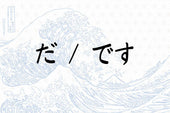
Understanding だ (da) and です (desu) in Japanese: Meaning and Usage
When learning Japanese, one of the first things you’ll come across is だ (da) and です (desu). These words don’t have a ...
-
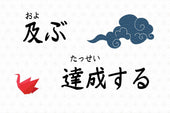
Difference Between 及ぶ (およぶ) and 達成する (たっせいする)
Both 及ぶ and 達成する can relate to "reaching" or "achieving" something, but they have distinct nuances and usage contexts...
-

JLPT N5 Study Guide: A Beginner's Roadmap to Acing the Test
If you’ve just started learning Japanese and are aiming to ace the JLPT N5, you’ll need a solid study guide to help y...
-

Beginner's Guide to Japanese Particles: Learn the Basics
TL;DR: Japanese particles are crucial for structuring sentences, acting like conjunctions or prepositions in English...
-

JLPT N5 Vocabulary List - All 748 Words You Need to Know
Vocabulary is the foundation of any language, and Japanese is no exception. The more you know, the better. Over time ...
-
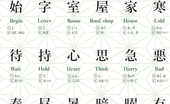
JLPT N4 Kanij List - All 176 Characters You Need To Know
After mastering the JLPT N5 kanji, you're ready to take your Japanese kanji game to the next level. JLPT N4. Let's go...
-
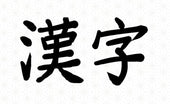
Kanji For Kanji - 漢字
Inception time. Which kanji compose the kanji of "kanji"? The kanji for "kanji" is actually pretty straightforward. I...
-

How to Memorize Katakana Easily: 9 Tips for Beginners
For those diving into Japanese, mastering hiragana and katakana is the first significant challenge. While hiragana o...
-
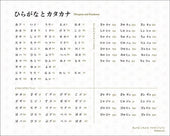
Complete Hiragana and Katakana Chart With All 112 Characters
The very first step for everybody who wants to learn Japanese is to study the hiragana and katakana chart (before lea...
-
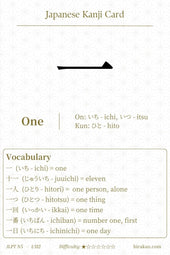
JLPT N5 Kanji: Kanji For One 一 (ichi)
Probably one the most simple kanji to remember, the kanji for 'one' is simply written '一'. Let's see its readings and...
-
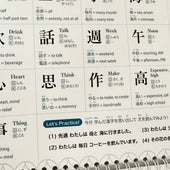
How Long Does It Take to Learn Kanji? A Beginner's Guide
Ask any Japanese student what's the scariest part of learning the language, and they'll say kanji. And they're righ...
-
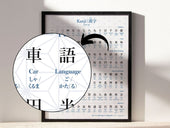
Is it Necessary to Learn Kanji? The Last Answer You'll Ever Need
Many beginners in Japanese wonder whether they should really learn kanji. I know this, because I also wondered when s...
-

How Long Does it Take to Learn Hiragana and Katakana?
As a beginner in Japanese, your first step is diving into the alphabets of Hiragana and Katakana. These are the build...
-

13 Best YouTube Channels to Learn Japanese, From Beginner to Intermediate
YouTube can be an incredible resource for learning Japanese. And best of all, it's free. So we've compiled a list of ...
-
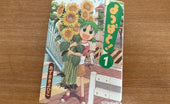
Top 10 Manga for Japanese Language Learners: From Beginners to Intermediates!
If you're learning Japanese, chances are you're interested in manga. So instead of reading texts about Tanaka-san s...
-
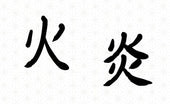
Kanji for 'Fire' in Japanese: 火 or 炎?
Welcome to our enlightening exploration of Japanese kanji! Today, we're igniting our understanding of a primal force ...
-

The Complete Guide to Country Names in Japanese: Say and Pronounce Them Right!
Whether you're planning a trip, learning Japanese, or just curious about how different countries are represented in a...
-
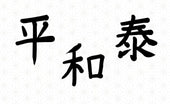
Kanji for Peace: 平, 和, 泰 - The Symbols of Harmony
You might be wondering what are the Japanese symbols for 'Peace'. In this article, we're diving deep into this univer...
-
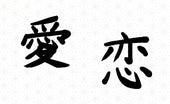
Kanji for 'Love': How and When to Use 愛 and 恋
Welcome to our journey into the world of Japanese kanji! Today, we're delving into one of the most heartwarming and p...
-

JLPT N5 Kanji List - All 112 Characters You Need To Know
Below we've listed all 112 JLPT N5 level kanji along with their English meaning, readings, and two accompanying vocab...

![この・その・あの・どの – Using ‘This / That / Which’ with Nouns in Japanese [JLPT N5]](http://hirakan.com/cdn/shop/articles/acd351ada3fe4b04ae86de788a3350b8.jpg?v=1766305268&width=170)
![これ・それ・あれ・どれ – Saying ‘This / That / Which One’ in Japanese [JLPT N5]](http://hirakan.com/cdn/shop/articles/this-that.jpg?v=1766305107&width=170)
![か~か – Expressing Choices like “A or B” in Japanese [JLPT N5]](http://hirakan.com/cdn/shop/articles/choices.jpg?v=1766304827&width=170)
![~から~まで – Saying “From A to B” in Japanese [JLPT N5]](http://hirakan.com/cdn/shop/articles/from-AtoB.jpg?v=1765093560&width=170)
![まで – Expressing “Until” and “Up To” in Japanese [JLPT N5]](http://hirakan.com/cdn/shop/articles/until-up-to.jpg?v=1765093405&width=170)
![から – Expressing “Because” and “From/Since” in Japanese [JLPT N5]](http://hirakan.com/cdn/shop/articles/because-from_since.jpg?v=1765093285&width=170)
![や – Listing Examples with “And, Among Others” in Japanese [JLPT N5]](http://hirakan.com/cdn/shop/articles/and.jpg?v=1765093138&width=170)
![か – Forming Questions and Saying “Or” in Japanese [JLPT N5]](http://hirakan.com/cdn/shop/articles/ka-questions.jpg?v=1763787134&width=170)
![も – Saying “Also” and “Too” in Japanese [JLPT N5]](http://hirakan.com/cdn/shop/articles/mo-also-too_99f908e6-78d0-4f82-8319-391ef42764bc.jpg?v=1763787251&width=170)
![と – Linking 'And', 'With', and Quotations in Japanese [JLPT N5]](http://hirakan.com/cdn/shop/articles/to-and-with-quotation.jpg?v=1763265110&width=170)
![で – Marking Where and How an Action Happens in Japanese [JLPT N5]](http://hirakan.com/cdn/shop/articles/de-where-how-action-happens.jpg?v=1763264973&width=170)
![へ – Marking Direction ‘Toward’ in Japanese [JLPT N5]](http://hirakan.com/cdn/shop/articles/he-marking-direction.jpg?v=1762667986&width=170)
![に – Marking Time, Destinations, and Recipients in Japanese [JLPT N5]](http://hirakan.com/cdn/shop/articles/ni-marking-destination.jpg?v=1762667846&width=170)
![の – Possession and Noun Linking in Japanese [JLPT N5]](http://hirakan.com/cdn/shop/articles/no-possession-and-noun-linking.jpg?v=1761961297&width=170)
![を – Marking the Direct Object in Japanese [JLPT N5]](http://hirakan.com/cdn/shop/articles/o-direct-object.jpg?v=1761960990&width=170)
![が – Marking the Subject ('Who/What') in Japanese [JLPT N5]](http://hirakan.com/cdn/shop/articles/ga-subject-marker_60f30f70-6ca5-47ee-9a00-3646195d7d3c.jpg?v=1761386355&width=170)
![は (wa) – Topic Marker and Contrast in Japanese [JLPT N5]](http://hirakan.com/cdn/shop/articles/wa-topic-marker.jpg?v=1761385996&width=170)
![じゃない・ではありません – Expressing 'Is/Was Not' in Japanese [JLPT N5]](http://hirakan.com/cdn/shop/articles/janai-dehaarimasen_2594963b-531e-4f4d-a9b0-361010e0a720.jpg?v=1760865884&width=170)
![だ・です/だった・でした – Saying ‘to be’ in Japanese [JLPT N5]](http://hirakan.com/cdn/shop/articles/da-desu-datta-deshita_58bbc732-53fd-48da-83c7-4e477e7cc0b2.jpg?v=1760864506&width=170)






















